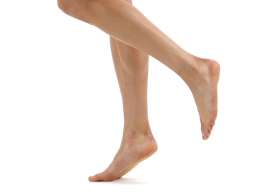Tips on Returning to Running
Monday 10th October

Returning to running is a goal shared by many people. It's a convenient way of staying fit and healthy and costs absolutely nothing! Returning to running for some is not as easy as putting on your trainers and getting out there. This blog will give you some simple, sensible advice that will allow you to transition back into running without any problems or injuries.
Make your first run a success
The length of time you have stopped running for and how sedentary you have become should dictate how you approach returning to running. If you have had a longer gap and have been more sedentary you need to start at a much more basic level and build it up. Avoid the temptation of trying to go out there and run the distances you have done in the past. A more sensible approach would be to do less than you think you can manage on your first run. This ensures you start with a successful run and will give you the encouragement you need to get back running.
Prepare your body
The stresses that running applies to our bodies is significantly higher than normal day to day life. Preparing your body to tolerate those higher stresses through strength training will help keep you injury free.
Here are the key exercises you should do to help get you strong for running. With each exercise try and build up the number of repetitions you can do, you could split them into 3 sets of each one, pushing to the point in each set where you only have a couple of repetitions left in the tank.
Calf raises: Stand on a step and raise your heel up and down in a controlled way pushing through your toes.

Here are some useful normal values for single leg calf raises that you can aim for relating to your age and gender. The number of reps you should be able to perform are in pink:
20-29yrs: Male 37, Female 30
30-39yrs: Male 32, Female 27
40-49yrs: Male 28, Female 24
50-59yrs: Male 23, Female 21
60-69yrs: Male 19, Female 19
70-79yrs: Male 14, Female 16
Squats: Squat down as far as you feel able, have your feet in a comfortable position, if this feels too easy then you can hold some weight.

Lunges: Nice long stride, alternate between legs and keep the movement controlled, again you can hold weight to make this harder

Bridge: Raise your hips off the ground pushing through one leg, drive your other leg upwards, hold it for a couple of seconds, lower back down and then change legs.

Band walks: Keep tension on the band at all times and take nice big sideways steps, complete this in both directions.

Completing these exercises 2-3 times a week will help build up the strength you need for running. It is also a good idea to use these exercises as a warm up before a run by completing a few repetitions of each one without fatiguing your muscles.
Monitor your weekly volume
In your first week try and complete 2 runs spread out over the week to allow for enough recovery. If you are extremely out of shape and haven’t run for a number of years, then starting off with as little as 30 seconds jogging in between walking may be your starting point. Monitor how far or how long you have managed to run in your first week and build it up slowly. Avoid any sudden increases in your weekly volume of running.
Listen to your body
You are bound to feel some aches and pains when you first start running. Try and recognise normal muscle soreness as this is to be expected. If you develop any lasting pain in a more specific area that doesn’t settle down then you may need to reduce your volume and build up more slowly, placing more emphasis on strengthening exercises. Do not be afraid to keep your weekly volume stable for some time until your body feels ready to do more. There are no fixed timeframes, give your body enough time to adapt to running.
Pace it
The pace you run at will also have a role to play when returning to running. You should start off at a comfortable pace, do not over reach with your stride, keep your stride length short and easy. As you get stronger and fitter and have more miles in the bank you will naturally start to increase your pace.
Where should you run?
A good starting point is to run on a flat route avoiding any major hills or challenging terrain. Some people prefer to run on treadmills which is also fine. You can add in hills when you are feeling fit and strong with your running.
Stay consistent in your approach, be open to building it up slowly and set yourself achievable goals. Your body will adapt over time, allowing you to enjoy all the benefits running brings to your health and wellbeing.
Other useful resources
The 'Couch to 5k' programme is a really comprehensive programme that can help further guide your running volume and progressions. Find more information on it here.
As well as Couch to 5k, your local Park Run is a great place to start in a way you can go at your own pace and also monitor your progress. It's a great way to meet new like minded friends and an opportunity to take your new hobby of running up with the rest of the family! You can find out more about your local park run is here.
« Back to News & Blog